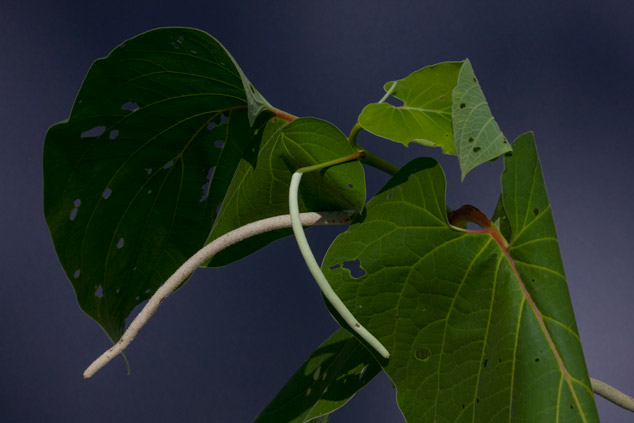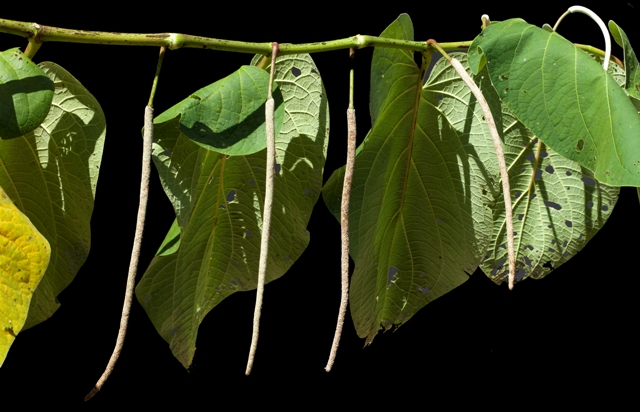Flavorings, spices, herbs, condiments in Maya diet
We are studying the perfumes, the spices and herbs, used to flavor food and drinks, to flavor incense and tobacco. We have lists of every flavor (every natural pre-Columbian herb or spice) and have cross-tabulations to document which plant was used with which other plants to create what mixture. Of all these edible or religiously inspired plant products, we are focusing on flavorings for cacao (cocoa in today’s American English). A parallel project is working on all the flavorings for tobacco. Tobacco use in the Maya area also includes tobacco as a medicine.
We will be presenting a complete guide to all the natural eco-friendly plant ingredients which provide flavor, aroma, and special taste to prehispanic chocolate-like cocoa drinks. But until we raise the funds needed to finish our coffee table books on cacao, we would like to get a few sample notes onto our Mayan ethnobotanical web site.
Dozens of excellent books are available on cacao and chocolate-related topics of the Maya, Aztec and their neighbors. Each year another new monograph adds an additional viewpoint and more information, albeit usually from the same basic Spanish observations, especially for Central Mexico during and immediately after the conquest.
What is notable about these helpful books is that most are of course focused on cocoa (the English word for what is properly called cacao, Theobroma cacao). In modern terms it is called chocolate, but the base material is cacao.
What is worth mentioning is that it is not just cacao that the Aztecs and Maya are drinking: they are drinking more than 20 different beverages. Literally, different kinds of drinks and gruels, in which cacao was but one of many ingredients. The other ingredients are known, and usually listed, but then the focus of every book and even each chapter quickly jumps back to cacao (or chocolate).
The diverse ingredients tend to be a tad forgotten.
I thank Dr Michael Coe, of Yale University, for instilling me with the goal to devote research to these flavorings and ingredients. As a result of him pointing out that the ingredients have not yet been as well studied as the core plant cacao, I have now spent over four years researching the herbs, spices, and other ingredients for the 20 or more different drinks.
Just as we have Coca-Cola, Pepsi Cola, RC Cola (at least this was available years ago), the Maya of AD 700 had difference flavors.
Plus 7-Up, Fanta and everything else. Fanta comes in many colors. A thousand years ago the Maya had their cacao in different colored beverages also: mostly red (achiote).
It was the same in a Maya city or an Aztec outpost: you could order any one of more than a dozen different drinks. If you wanted to stay awake you ordered one recipe. If you wanted to go to sleep you ordered your cacao with other ingredients.
If you wanted sex you had many options to add to your cacao. If you wanted stamina to hike endless miles with your cargo along a narrow trail you could add other ingredients.
And if you got a venereal disease from the aphrodisiac mixture, there were many many different medicines you could also drink with your cacao.
So yes, we study “cacao”, but in reality we study twenty different plants. We are interested primarily in natural ingredients: wholesome leaves, flowers, bark, roots, fruits, nuts, and berries. Artificial flavors are not what we study.
Sugar was not used by the Maya or Aztec; they had honey and plenty of sweetness, but not the kind of sugar we use today.
Modern chocolate has as many as 59 different flavors, depending on what nut or fruit or spice you add. The Classic Maya had over 20 different flavorings that we know about which are specifically listed as being used in cacao. Spices in general (for any and all foods) number even more, and of course if you use fruits or nuts (in addition to herbs) you get even more potential flavors.
One of the flavors for cacao is from Piper species
Agronomist and ethnobotanist Armando Caceres informed us there were over 100 species of Piper merely in the Alta Verapaz Izabal area. Other sources suggest there are almost 300 species for all of Guatemala, and over 1000 in tropical America.
The number of chemicals in the average Piper plant exceeds what my brain can fathom. Multiply this by the several hundred species for Guatemala alone (not to mention the rest of Mesoamerica) and you can see what keeps us busy here at FLAAR.
Where do you find Piper plants?
Alongside most streams and springs you can find Piper. Alongside most roads, even highways (in the fence rows) you can find wild Piper plants, especially throughout Alta Verapaz and Izabal. You can expect Piper in El Peten as well, but I do see more in the other two mentioned departamentos. In Alta Verapaz the plants occur at high altitudes; yet in Izabal and the Costa Sur the plants grow at low altitudes (in most cases other species).
In the ethnobotanical garden of FLAAR our several Piper species grow like happy healthy weeds: giant leaves and the stalks several meters high. But they never flower (probably not enough direct constant sun). But the Piper near Frutas del Mundo was in a fence row which gets the shade of the living fence posts (the posts grow to become normal trees).
Often the plants are cultivated in house side gardens, but usually the plants are simply weed like along the roads and streams. Often you get several different species growing in the same areas, just a few meters from each other.
Hierba santa maria, Piper auritum.
Hierba santa maria, Piper auritum.
Starting a list of the species in Guatemala
There are so many changes and revisions in plant names that its tough to keep track, especially if there are 100 species merely in one area and even more elsewhere. But we start off with at least a basic list.
In Guatemala,
- Piper aduncum
- Piper aeroginosibaccum
- Piper amalago
- Piper auritum
- Piper cayoense
- Piper donnell-smithii
- Piper hispidum or hispidium
- Piper ixocubvainense
- Piper jacquemontianum
- Piper oradendron
- Piper patulum
- Piper peltatum
- Piper tuerckheimii
- Piper umbellatum
- Piper variabile
- Of these, several different species are called cordoncillo.
In Yucatan
- Piper aduncum
- Piper amalago
- Piper auritum
- Piper cordoncillo var. apazoteanum
- Piper hispidum or hispidium
- Piper jacquemontianum
- Piper marginatum
- Piper neesianum
- Piper pseudolindenii
- Piper psilorhachis
- Piper yucatanense
We are starting a bibliography on Piper species of Mesoamerica but this will take a while to finish.
We already have one web page with several photographs. I now add this additional page with still more Piper plants, since we found a lot of “cordoncillo” growing along a fence line in Izabal, near Aldea Buenas Aires (near the Frutas del Mundo property of Dwight Carter).
Nowadays chocolate is flavored differently than a thousand years ago. Today chocolate is flavored with mint, almonds, peanuts, cinnamon and scores of other fruits, nuts (and chemicals). Today most “chocolate” is candy, so mostly sugar and chemicals. We recognize the popularity of candy, but this is not what we are studying.
Our interest are in the flowers, leaves, roots, bark, stems of local plants of prehispanic Mesoamerica. Many of these flavorings of the Aztec and Maya have definite potential for being re-introduced into the world of cacao and chocolate today.















































































